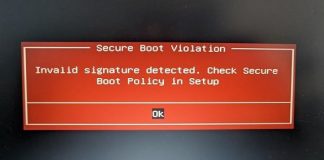Throughout 2023, a staggering number of over 8 million records were compromised, highlighting the critical issue of cybersecurity threats in today’s digital environment. With businesses increasingly depending on networked systems and storing large quantities of confidential information, the risk of cyberattacks has become a significant concern. Safeguarding this data and upholding the integrity of systems stands as an imperative, rendering the establishment of a resilient cybersecurity framework absolutely essential.
In this post, we’ll examine the indispensable elements of such a framework, offering guidance to entities on effectively fortifying their assets and mitigating risks. From comprehending regulatory compliance benchmarks such as SOC 1 to embracing the ethos of continual monitoring and enhancement, we’ll explore strategies and exemplary practices requisite for combating cyber threats amid today’s frenetic digital landscape.

Understanding SOC 1 Compliance
Embedded within the strategy of robust cybersecurity protocols lies a critical imperative: adherence to industry benchmarks and regulatory paradigms. SOC 1, or system and organization control 1, stands as a meticulously structured framework tailored to evaluate and divulge controls related to financial reporting. There are two types, and understanding the difference between SOC 1 type 1 vs type 2 is essential.
A Type 1 report offers a static appraisal, encapsulating an organization’s control status at a specific juncture. Conversely, a Type 2 report delves deeper, scrutinizing the efficacy of these controls over an extended period, typically spanning six to twelve months.
By navigating the subtleties inherent in these report types, organizations can discerningly assess their compliance endeavors and strategically fortify their cybersecurity stance.
A nuanced comprehension of SOC 1 compliance dynamics emerges as pivotal for organizations aiming to showcase their unwavering commitment to fortifying financial data integrity and upholding regulatory frameworks. Such endeavors are instrumental in fostering trust among a spectrum of stakeholders and discerning clientele.
Implementing IT General Controls
IT general controls (ITGC) anchor an organization’s digital defense strategy by prescribing core protocols and processes for the stewardship of IT assets. These protocols span several critical functions, including the regulation of access, management of changes, strategies for data backup and recovery, and the clear delineation of roles and responsibilities.
A meticulous approach to deploying ITGC controls is pivotal for organizations aiming to navigate the complexities of their IT ecosystem, ensuring the safeguarding of data’s secrecy, wholeness, and availability. Concentrating on the rigorous establishment and persistent refinement of these controls is key to fortifying an organization’s defenses against a landscape of digital threats.
In addition, tailoring ITGC controls to sync with established industry benchmarks and exemplary practices elevates an organization’s operational agility and compliance with regulatory mandates. Proper enactment of ITGC controls is instrumental not just in negating digital risks but also in optimizing operational workflows and ensuring regulatory alignment.
Leveraging Risk Assessment Frameworks
Beyond the application of security measures, it’s crucial for entities to engage in regular risk evaluations to spot and rank possible risks and weak spots. Frameworks such as the NIST Cybersecurity Framework, ISO/IEC 27001, and CIS controls present organized methods for the evaluation and control of cybersecurity risks.
Employing these structures enables entities to follow a methodical strategy for managing risks, ensuring their cybersecurity tactics align with recognized industry norms and superior practices. This forward-looking stance enables entities to detect and rectify vulnerabilities prior to potential exploitation, thereby strengthening their defense against digital threats and protecting essential operations.
Furthermore, the use of risk management frameworks improves decision-making processes by offering entities insight into their risk profile and assisting in the efficient distribution of resources. Through diligent risk evaluation, entities can uncover and evaluate possible weak points and threats, arrange mitigation actions accordingly, and judiciously allocate resources to bolster cybersecurity fortitude.
Enhancing Incident Response Capabilities
Given the persistent nature of cyber threats, it’s imperative for organizations to anticipate and strategize for security incidents. Crafting and upholding a solid plan for incident response is crucial to reducing the fallout from breaches and promptly resuming business as usual.
A comprehensive incident response strategy includes prompt detection and pinpointing of security breaches, quick isolation and removal of threats, and detailed recovery actions along with a full debrief to capture insights.
Continuous Monitoring and Improvement
The pursuit of cybersecurity is a perpetual process, demanding relentless oversight and methodical advancement. It commands organizations to engage in perpetual scrutiny of their cybersecurity posture, employing exhaustive evaluations, precision-driven audits, and incisive penetration tests. This rigorous process is vital for pinpointing and ameliorating vulnerabilities or deficiencies.
By assimilating insights distilled from security breaches and the advent of nascent threats into the core of their cybersecurity schema, businesses can judiciously refine and fortify their guard. This process of continuous adaptation not only amplifies an organization’s finesse in detecting and thwarting threats but also nurtures an environment of systematic enhancement. This ethos underscores the imperative of cybersecurity within the fluctuating panorama of digital threats.
Moreover, a steadfast commitment to ongoing oversight and systematic advancement underscores an organization’s allegiance to cybersecurity. This allegiance is paramount, not only in fortifying the trust of stakeholders but also in cementing an entity’s competitive edge.

Final Thoughts
Building a sturdy cybersecurity infrastructure is imperative for fortifying organizations against the dynamic threat environment. Grasping and executing pivotal elements like SOC 1 compliance, ITGC controls, risk assessment frameworks, incident response capabilities, and ongoing monitoring and enhancement can bolster organizations’ fortitude against cyber threats and safeguard their critical assets.
In the contemporary digital era, prioritizing cybersecurity emerges as a paramount concern for organizations aiming to uphold trustworthiness, integrity, and a competitive edge in the market.

Taylor is a freelance SEO copywriter and blogger. His areas of expertise include technology, pop culture, and marketing.

















